Trademark owners' tendency in attempting to register as trademarks not only word or figurative marks used on their products but the shape of the products themselves raised the question on whether trademarks consisting of three dimensional product shapes and product packaging generally protected as industrial designs could also be registered as trademarks. Despite being regarded as an "unconventional one", shape marks are regarded to be registrable just like the other signs capable of being represented graphically and on the distinctiveness point, it is European Court of Justice's ("ECJ") settled practice that "the criteria for assessing the distinctive character of three dimensional trademarks are no different from those applicable to other categories of trademarks"(C-136/02 P, para.30). Despite ECJ's interpretation of equality on distinctiveness assessment of all kinds of trademarks, it is seen in practice that Community shape marks are not only subject to an examination on distinctiveness under articles 7(1)(b), (c) and (d) of the Community Trademark Regulation 40/94 ("The Regulation") like all the marks but also a test under article 7(1)(e) declaring "the shape which results from the nature of the goods themselves; or the shape of goods which is necessary to obtain a technical result; or the shape which gives substantial value to the goods" unregistrable. These conditions applicable to shape marks arising from their very nature make one wonder; is the equality principle of ECJ only applicable between equals?
The problematic nature of shape marks arises from the assumption that shapes are inherently less capable to distinguish goods as it is relatively harder for an average consumer to perceive the shape mark as an indicator of origin rather than a quality of the goods in question and that the attention of the average consumer faced with a shape mark used along with word or figurative marks, is drawn to the latter precluding the shape to be perceived as a trademark. Also, the concern not to grant one, a monopoly right on a product shape where such shape can be protected for a limited period of time by means of other intellectual property instruments such as designs, patents and utility models plays a significant role on the issue. And the outcome of all this: there are few registered shape marks in Europe.
It can be seen that in its early application, OHIM examined the registrability of shape marks merely based on the general rules of distinctiveness and descriptiveness under articles 7(1) (b) and (c) and was reluctant to apply article 7(1)(e) setting forth the registrability conditions specific for the shape marks, which can be said to have changed with the FERRAGAMO Decisions (R-395/199-3, R-272/199-3) where the OHIM Board of Appeals began to deal with the issue from the perspective of article 7(1)(e) and to examine distinctiveness on the points of whether the shape refers to the very nature of the goods, whether the shape itself is functional, and whether the shape adds substantial value to the product.
ECJ also applies this test and it is a rather strict one. In its decision numbered T-122/99 the Court of First Instance ("CFI") held that the three dimensional mark consisting of the shape of a bar of soap with an "edge"did not necessarily consist of a shape resulting from the nature of the goods and thereby was distinctive as it substantially differed from the remaining of the soaps in the market. However CFI's approach on finding shapes substantially differing from the remaining ones in the market distinctive was not shared by the ECJ since Philips' three-headed electric shaver was declared unregistrable as its essential functional features were attributable only to a technical result and that ground for refusal could not have been overcome by establishing that there were other shapes in the market allowing the same technical result to be obtained. Thereby the ECJ also made it clear that arguments on the unique configuration of the shape distinguishing it from the other products in the market could not be a valid argument for the test under article 7(1)(e).
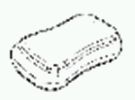
P&G's mark consisting of a soap bar was not found to be exclusive to the nature of the goods by the CFI as it substantially differed from the other soaps in the market. (T-122/99)
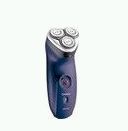
Philips' mark consisting of the three-headed electric shaver was found to be functional thereby unregistrable by the ECJ despite its configuration differentiating it from the remaining goods in the market.(C-299/99)
It can be seen from a number of decisions that it is indeed difficult in Europe to argue distinctiveness of the shape marks.
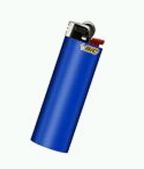
The BIC Lighter, found to be unregistrable as it consisted of a combination of presentational features which came naturally to mind and which were typical of the goods concerned, it was not markedly different from various basic shapes for the goods in question which were commonly used in trade, but was a variation of those shapes. (T-262/04)
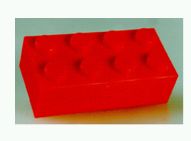
The Lego brick, found to be consisting exclusively in its essential characteristics of the shape to obtain a technical result, thereby functional even if the function of that shape could be achieved by other means and other shapes. (T-270/06)
These above mentioned decisions beg one question: what shape is registrable as a trademark in Europe?
Even though the lego brick couldn't, another nostalgic toy passed the functionality test. In its decision dated September 1, 2009, OHIM's Second Board of Appeal upheld the Cancellation Division's decision finding the widely known Rubik's cube inherently distinctive. The Board held that the cube's presentation did not in any ways suggest that it was a game of any sort and departed significantly from the customs of the sector. On the functionality point, the Board held that the cubic grid structure did not give any indication whatsoever as to its function as visually presented even for "three dimensional puzzles" provided that the rotating capability was appropriately disregarded.

The Rubik's Cube defined as "unique sui generis object of interest" by the Board was found to be inherently distinctive.
Additionally, a 3D mark consisting of a pencil-shaped speaker found to be inherently distinctive and able to indicate commercial origin of the goods in question within the meaning of article 7(1)(b) by the CFI (T-460/05). It can be seen that in the 2007 dated decision, the fact that the shape in question significantly departed from the norm or customs in the sector was indeed decisively taken into consideration as it was held that "even if the existence of specific and original characteristics does not constitute an essential condition for registration, the fact remains that their presence may, on the other hand, confer the required degree of distinctiveness on a trademark which would otherwise not have it". The decision can be said to derive from the settled European practice with respect to the level of importance given to the differentiation of the shape from the remaining ones in the market.
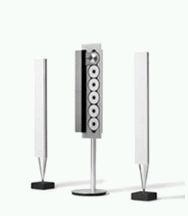
The shape consisting of "vertical, pencil-shaped column, with a long rectangular panel attached to one side with the point of the pencil joining a flat base" was found to be inherently distinctive for speakers as the mark with a striking design was truly specific and could not be considered altogether common.
Regarding the Turkish practice, it should first be mentioned that the provisions of the Decree Law Pertaining to Protection of Trademarks No.556 ("The Decree Law") which is the current legislation applicable to trademark practice in Turkey –which will be replaced with the Trademarks Act undergoing the legislating process- can be said to be almost completely in line with the Council Regulation on Community Trademark No.40/94 ("Community Trademark Regulation") as a result of the harmonization work undertaken in the 90's to adapt Turkish trademark practice with the European practice. Therefore, just like in Europe, the "shape of goods or their packaging" are regarded as signs capable of being represented graphically under article 5 of the Decree Law No.556 and therefore registrable as trademarks provided that they possess distinctiveness under article 7. However, a rather peculiar provision can be seen under article 4 of the 2005 dated Directive on the Application of the Decree Law Pertaining to Protection of Trademarks No.556, where a shape is defined to include "2D and other shapes that can be used as the packaging of the goods but not the goods themselves" implying that only the packaging but not the shape of the goods can be registrable as shape trademarks. However in Turkish practice, 3D product shape marks have always been regarded as registrable signs as well as 3D product packaging which can be seen from the 2002 dated Rafaelo decision of Court of Appeals ("CoA") where it was held that "3D shapes do not necessarily have to consist of product packaging" (11.HD, 2001/10235E, 2002/1984K.).
Another provision which initially created uncertainty in practice is article 5/II where it is stated that "a trademark may be registered along with the product or the packaging. However, the registration of the product or the packaging does not grant exclusive rights." The wording of the provision led to the interpretation that where the word mark is registered along with the product or the packaging, it will be only the word mark the exclusive rights are granted to and not the product or the packaging underneath. However CoA's Davidoff Classic decision clarified the issue in 1999 by granting protection to both the word mark and the shape of the cigarette pack with the unique color combination and design underneath as it was held that the product or the packaging would also be registrable and protected along with the word mark as long as it is sufficiently distinctive as well. (11.HD, 1999/6866E., 1999/9075K.).
Regarding the overall distinctiveness test for shape marks in Turkish practice on the other hand, it is seen that the mere criteria to be taken into account is indeed (emphasis added) whether the mark in question is sufficiently distinctive to distinguish the goods/services it is used on before the eyes of the consumers based on a number of factors.
The inherent distinctiveness sought for shape marks differs from the concepts of novelty or individual character sought for industrial designs and work of arts. The examination of the shape marks are subjected to a test of general rules of inherent distinctiveness and descriptiveness under articles 7(1)(a) and (c) -corresponding to articles 7/(1)(a),(b) and (c) of the Community Trademark Regulation- and at this point (i) whether the shape is directly related to the goods in question or it possess its characteristics, ii) whether its form is sufficiently differentiated from the other signs/shapes available in the relevant market, are examined. Even though in practice a specific reference is not made to the provision specific to distinctiveness of shape marks under article 7(1)(e)–corresponding to article 7/(1)(e) of the Community Trademark Regulation-, it is seen that whether the shape arises from the very nature of the goods in question or whether the shape is a result of a technical necessity is also examined.
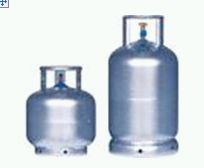
The Turkish CoA held that the trademark registration consisting of the "word mark and silver bottled gas shape" did not grant exclusive rights to the proprietor on the shape mark as the shape was found to be devoid of distinctive character as it arose from a technical requirement. (11.HD, 1997/9672E., 1998/2127K.)
It should also be noted that whether the shape is registered as a trademark in a country member to Paris Convention also plays a significant role in registrability of shape marks in Turkey. Article 6 bis 4 of Paris Convention states that "every trademark duly registered in the country of origin shall be accepted for filing and protected as is in the other countries of the Union, subject to the reservations indicated in this Article". Subsection 6B of the Article sets forth the reservations including "the mark being devoid of distinctive character in the country of application". Applying this article, Turkish CoA generally rules that the shape mark found to be registerable in a Paris Convention Member state shall also be registered in Turkey as this situation does not invoke any of the reservations set forth under the mentioned provision. The Malibu decision reflects the CoA's view on the issue where the registration for Malibu beverage's white bottle shape in its country of origin was the most significant ground for affirming the mark's registrability in Turkey as well. (11. HD. 2000/3835E., 2001/6089K.)
Further, whether the mark is in actual use in Turkey, regarded as a presumed indication of its recognition on behalf of the Turkish consumer, is also taken into account as a factor reinforcing the mark's registrability.
It is seen that all these factors taken into account in Turkish practice while determining whether a shape mark can be registered or not, are examined interdependently having a cumulative effect instead of drawing precise lines between the tests of general distinctiveness/descriptiveness under articles 7/1(a)-(c) or test of functionality under article 7/1(e) or acquired distinctiveness under article 7/last, in order to find out whether the mark is actually distinctive enough on behalf of the Turkish consumer so that it can in fact fulfill its fundamental function of distinguishing the goods and services in question.
It should also be noted that despite the fact that Turkish Patent Institute ("TPI") generally examines distinctiveness of shape marks with respect to general provisions of distinctiveness and descriptiveness under articles 7/1(a) and (c) reminiscent of the early OHIM application mentioned above, it is seen that its application is quite rigid and a vast majority of the applications for shape marks are rejected at the administrative stage where IP Courts can be said to make a broader and a more profound examination on registrability of shape marks.
The jurisprudence of the Turkish Courts can be reflected by a number of decisions indicated below.
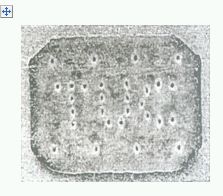
The CoA held that as the shape did not exclusively consist of the natural shape of the goods, the word and shape mark complemented each other, both the word and the shape marks have been registered in abroad and used extensively; therefore the mark should be registered. (11.HD, 2002/2383E, 2002/6410K.) PIC 10
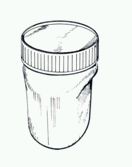
The well-known Nutella jar has been found to be inherently distinctive as it was "different from the ordinary shapes in the market" and "did not make a direct reference to the goods covered (mainly chocolate and confectionary)". The Court also held that the shape mark should be registered pursuant to Article 6 bis 4 of Paris Convention as it was already registered in a number of Member States. (11.HD, 2005/11885E., 2006/12293K.) PIC 11
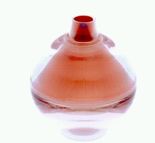
The shape of the perfume bottle has been found to be registrable as it possessed an original form differentiating from the ones in the market, as the nature of the goods did not define the form of the bottle to be used and the shape in question was not created in order to achieve a technical result. (11. HD, E2004/10620, K2005/7392) PIC 12

The famous NESCAFE RED MUG was found to be inherently distinctive as it had an original design with an original color combination of a red background and a golden line. (11.HD, 2006/9039E., 2007/1741K.).
Therefore it can be said that in Turkey, a shape mark sufficiently differentiated from the other signs/shapes available in the relevant market, found not to be arising from the nature of the goods themselves or from a technical requirement, already registered in the country of origin which has been in actual use in Turkey shall be registrable.
When Turkish and European practice on the issue are examined comparatively, it can be said that these systems differ from each other on two fundamental points; firstly the perception and examination of the concept of inherent distinctiveness and the importance given to the level of differentiation of the shape mark from the remaining ones in the market and secondly the method of tests applicable to the shape marks are handled.
Turkish practice seems to give more significance to whether the mark has an original form differentiating it from the others in the market whereas this is not generally sufficient for a mark to be regarded as inherently distinctive in Europe as if a mark is found under Europe's inherent distinctiveness test to be arising from the nature of the goods or functional, the fact that there are different forms or different ways to reach a function is regarded to be irrelevant.
Further, it is seen that in Turkish practice all the factors having an impact on the registrability of the shape mark are assessed rather globally in order to find out whether the mark can actually be identified by a consumer in the marketplace as the goods of an undertaking based on a number of factors indicated above meaning whether the mark can in fact (emphasis added) fulfill its fundamental function to indicate the origin of the goods in question whereas in Europe precise lines are drawn between the tests of distinctiveness, descriptiveness and functionality and the relevant factors are examined separately without possibility of a cumulative effect. It can also be said that Europe examines the issue of inherent distinctiveness for shape marks from a more notional point of view whereas Turkey has a more factual approach rendering registrability of 3D shape marks relatively easier to accomplish.
Finally, with an oversimplification, the difference between these two systems can be summed up as follows. In order to get a trademark registration for a product shape in Turkey, one has to have a shape sufficiently different from the remaining ones in the market whereas such shape needs to reach the level of being a unique sui generis object of interest in Europe.
The content of this article is intended to provide a general guide to the subject matter. Specialist advice should be sought about your specific circumstances.


